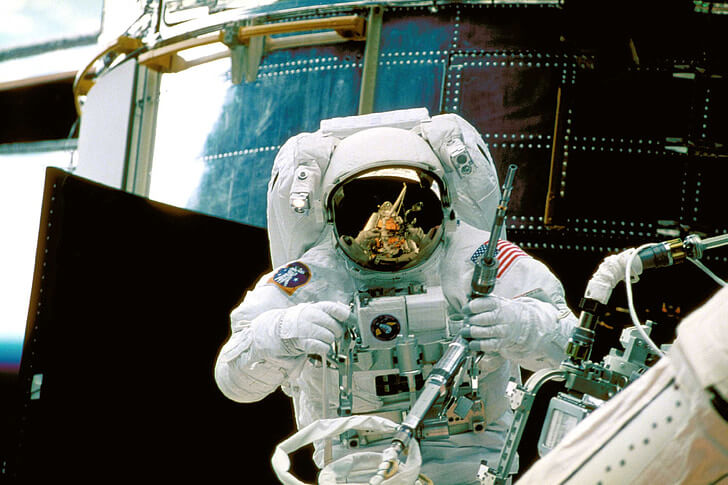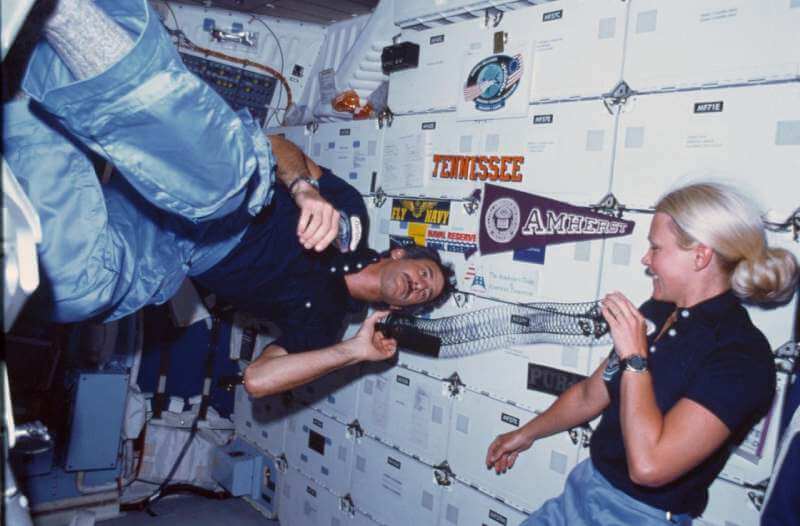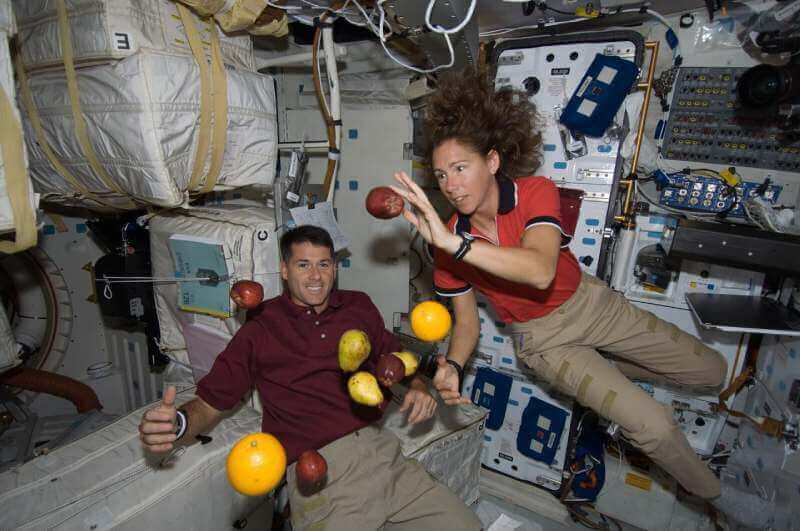Space travel has captured the imagination of humanity for decades, offering a glimpse into the vast unknown and pushing the boundaries of human exploration. Among the many intriguing aspects of this extraordinary journey, the concept of weightlessness stands out as a captivating phenomenon.
As astronauts venture beyond Earth’s atmosphere and enter space, they are introduced to an environment where the conventional experience of gravity undergoes a profound transformation. In this article, we will embark on an exploration of the intriguing phenomenon of weightlessness in space, delving into the reasons why astronauts feel weightless during their missions.
What is Weightlessness?
When astronauts venture into space, they experience a remarkable sensation: weightlessness. In the context of space travel, weightlessness refers to the state in which astronauts experience a sensation of apparent weight reduction or complete absence of weight. This occurs due to the unique interplay between gravity and the physical conditions of space. Unlike on Earth, where gravity pulls objects towards the center of the planet, the influence of gravity in space is significantly altered.
Why Do Astronauts Feel Weightless in Space?
Unlike the pull of gravity we feel on Earth, astronauts in space seem to effortlessly float and move without the constraints of weight. This intriguing phenomenon can be attributed to the interplay between gravity, orbital motion, and counteracting forces. Exploring the reasons why astronauts feel weightless in space unveils the fascinating physics and conditions that shape their unique experience beyond the bounds of our planet.
Absence of Gravity
The primary reason astronauts feel weightless in space is the absence of the force of gravity, as we commonly experience on Earth. In space, the influence of gravity is still present but significantly diminished. This state of reduced gravity, known as microgravity, allows objects and individuals to experience a different set of physical laws.
Understanding the Concept of Microgravity
- The force of gravity experienced by astronauts in space is approximately 90% weaker than on Earth.
- In space, the influence of gravity is significantly diminished, creating a state of reduced gravity known as microgravity.
- Microgravity allows objects and individuals to experience a different set of physical laws.
- Microgravity provides a unique environment for scientific research, enabling experiments that are not feasible on Earth.
- The absence of gravity in space allows astronauts to float freely and move effortlessly.
- Astronauts in microgravity experience a sensation of weightlessness, as there is no constant downward force acting on their bodies.
- The absence of gravity in space poses challenges for astronauts in terms of adapting to the new environment and performing everyday tasks.
Why Astronauts Seem Weightless in Orbital Motion
Objects and astronauts in orbit around the Earth are in a state of continuous freefall. The gravitational force exerted by the Earth on the spacecraft and its occupants is countered by the centrifugal force generated by their orbital motion. As a result, astronauts and objects appear to be weightless, perpetually falling toward the Earth but also moving forward fast enough to maintain a stable orbit.

Counteracting Forces
Besides the absence of gravity and the constant freefall experienced in orbit, other forces can counteract the perception of weight. For instance, centrifugal force can be felt during rapid rotational movements or when the spacecraft undergoes acceleration or deceleration. These counteracting forces contribute to the unique experience of weightlessness for astronauts in various situations.
Factors Influencing Astronauts’ Perception of Weightlessness
Astronauts experience weightlessness in space, defying the conventional notion of gravity’s constant pull on objects. This captivating phenomenon is influenced by various factors that shape astronauts’ perception of weightlessness. These factors include sensory adaptation and body positioning and orientation, which play essential roles in how astronauts interpret and navigate the microgravity environment. Understanding these influences provides valuable insights into the remarkable experience of weightlessness for astronauts in space.

Sensory Adaptation
During their stay in space, astronauts undergo sensory adaptation, a process by which their bodies gradually adjust to the absence of gravity. This adaptation allows them to navigate and perform tasks effectively in microgravity environments.
A Deeper Look Into the Senses in Space:
Vestibular System:
The vestibular system, responsible for balance and spatial orientation, undergoes significant changes in microgravity. Without the constant pull of gravity, the inner ear’s fluid-filled canals no longer provide accurate information about the body’s position and movement. As a result, astronauts may experience space motion sickness and disorientation during the early stages of their mission.
Visual Perception:
Visual cues that help with depth perception and orientation on Earth, such as the horizon and vertical structures, are absent in space. Astronauts rely heavily on visual references within the spacecraft, equipment, and fellow crew members to orient themselves in microgravity. The lack of a clear “up” or “down” can initially cause visual confusion, but over time, astronauts adapt to interpreting visual cues in the absence of gravity.
Proprioception:
Proprioception, the sense of body position and movement, is challenged in microgravity. On Earth, the body’s proprioceptors constantly detect changes in muscle tension, joint angles, and body position in relation to gravity. In space, without the consistent force of gravity, astronauts must rely on visual and tactile feedback to sense their body’s position and movement.
Tactile Sensation:
The sense of touch remains largely intact in space, but the absence of gravity affects tactile feedback. Objects do not have the same weight or resistance as on Earth, making it necessary for astronauts to adjust their sense of touch to interact with objects and control forces.
Auditory Perception:
Sound behaves differently in the microgravity environment of space. Without gravity to conduct sound waves, vibrations and sound propagation are altered. Astronauts may experience changes in how they perceive sound, including altered pitch and timbre.
Time Perception:
In the absence of external cues like sunlight, the 24-hour day-night cycle, and the regular force of gravity, astronauts may experience alterations in their perception of time. The constantly changing environment and lack of natural day-night patterns can disrupt circadian rhythms, leading to changes in sleep patterns and overall time perception.
Adapting to these sensory challenges in microgravity requires time and adjustment. Over the course of their mission, astronauts undergo sensory adaptation, enabling them to effectively navigate and perform tasks in the unique environment of space.
Body Positioning and Orientation
The positioning and orientation of the astronauts’ bodies also play a role in their perception of weightlessness. Depending on their body position, they may experience different sensations, such as feeling lighter or heavier in specific areas. Exploring different orientations and understanding the body’s response to changes in position is crucial for astronauts to adapt to the unique environment of space.
Conclusion
In conclusion, weightlessness is a defining characteristic of space travel, offering astronauts an extraordinary and unfamiliar experience. The absence of gravity, continuous freefall in orbit, and the presence of counteracting forces contribute to the perception of weightlessness.
Through sensory adaptation and understanding the effects of body positioning and orientation, astronauts navigate the challenges and wonders of microgravity. The experience of weightlessness in space remains a testament to the remarkable nature of human exploration beyond the confines of our planet.

